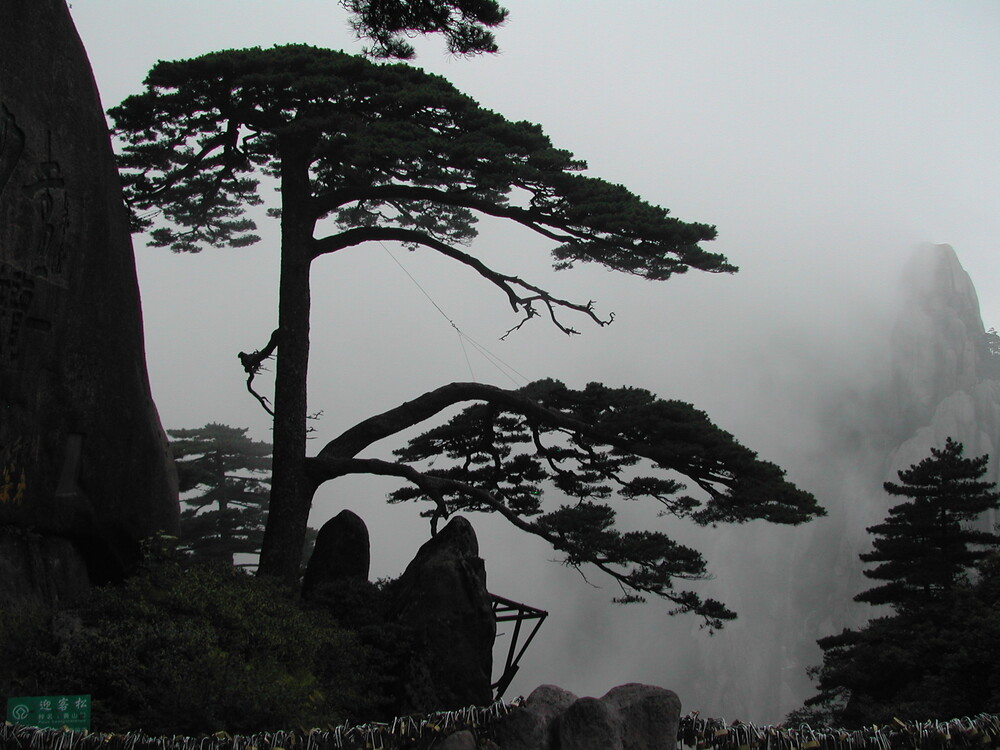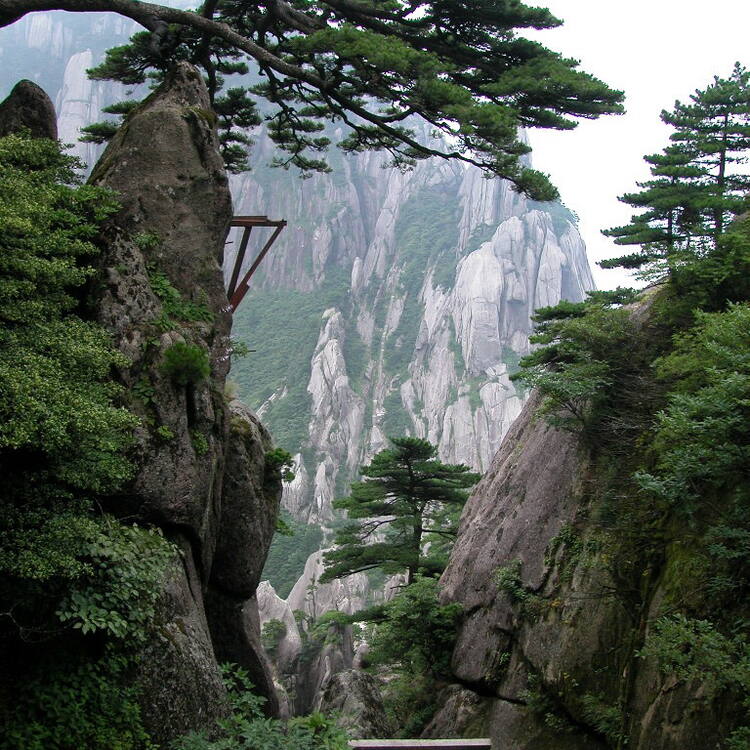Are you ready for a journey into the mesmerizing landscapes of Mount Huang, also known as the Yellow Mountains? Brace yourself for an adventure that will transport you into a world of natural elegance. Join me as we delve into the ever-changing seasons of this breathtaking destination, capturing its beauty through the lens of landscape photography. Immerse yourself in the atmospheric ink wash landscapes that have inspired artists for centuries. Experience Mount Huang: A Canvas of Nature’s Elegance.
Table of Contents
- The Majestic Yellow Mountains
- Tips and Techniques for Capturing the Beauty of Mount Huang
- Frequently Asked Questions
- 1. What makes Mount Huang a popular destination for landscape photography?
- 2. How can I best capture the different seasons on Mount Huang?
- 3. What are some essential photography gear I should bring to Mount Huang?
- 4. Are there any photography tours or workshops available on Mount Huang?
- 5. Do I need prior photography experience to visit Mount Huang?
- 6. Are there any accommodations available near Mount Huang?
- 7. Can I explore Mount Huang on my own, or do I need a guide?
- Wrap Up
The Majestic Yellow Mountains
Mount Huang, also known as Huangshan or Yellow Mountain, is a famous mountain range located in eastern China. It is situated in the southern part of Anhui Province and is known for its stunning natural scenery, unique granite peaks, ancient pine trees, hot springs, and cultural significance. Mount Huang is renowned for its picturesque landscapes and has been a source of inspiration for many traditional Chinese paintings and poems. It is a popular destination for tourists and outdoor enthusiasts, offering hiking and trekking opportunities amid its dramatic landscapes.
Exploring Mount Huang’s Seasons
One of the most captivating aspects of Mount Huang is its ever-changing seasons. From the vibrant blossoms of spring to the golden hues of autumn, each season brings a unique charm to this majestic landscape. Imagine witnessing the cherry blossoms in full bloom, painting the mountains with delicate shades of pink. Or perhaps, find yourself captivated by the fiery red and orange leaves that blanket the hillsides during the fall. No matter the time of year, Mount Huang offers a spectacle to behold.
Unveiling the Secrets of Landscape Photography
As we traverse the expanse of Mount Huang, we will uncover the secrets of capturing its beauty through landscape photography. Learn how to play with light and shadow to enhance the depth and drama of your images. Discover the art of composition as you frame the mountains and valleys in breathtaking ways. With every click of the shutter, you will be preserving a moment of nature’s elegance, frozen in time.
The Allure of Atmospheric Ink Wash Landscapes
The ethereal landscapes of Mount Huang, often compared to the beauty of traditional Chinese ink wash paintings, offer a unique visual feast. The mist-shrouded peaks, winding trails, and tranquil ponds create a poetic scene that seems to be borrowed from the brushstrokes of ancient artists. Allow yourself to be captivated by the dreamlike beauty that unfolds before you, immersing yourself in a world where fantasy and reality seamlessly intertwine.
Seasonal Delights for the Adventurous Spirit
While the landscapes of Mount Huang are undoubtedly awe-inspiring, the region also offers a plethora of activities for the adventurous spirit. Lace up your hiking boots and embark on thrilling trails that will take you through lush forests, along crystal-clear streams, and to panoramic viewpoints that will leave you breathless. Let your adventurous side soar as you explore ancient villages, encounter cascading waterfalls, and soak in natural hot springs. Mount Huang has something to offer for every explorer.
Did you know that Mount Huang was named a UNESCO World Heritage Site in 1990 for its outstanding geological, aesthetic, and cultural value?
Preserving Nature’s Masterpiece
As we revel in the beauty of Mount Huang, it is essential to recognize the importance of preserving this natural masterpiece. As visitors, we have a responsibility to respect the fragile ecosystems and minimize our impact on the environment. Through sustainable practices and conscious exploration, we can ensure that future generations can continue to experience the allure of Mount Huang.
A Must-Visit Destination for Nature Enthusiasts
Mount Huang stands as a testament to the breathtaking beauty that can be found in nature. Whether you are an avid landscape photographer, a hiker seeking adventure, or simply someone who appreciates the wonders of the world, this destination promises to captivate your senses. From the vivid colors of spring to the tranquil white winter landscapes, Mount Huang offers a canvas of nature’s elegance that is waiting to be explored. Embark on a journey that will leave you with memories to last a lifetime.

Tips and Techniques for Capturing the Beauty of Mount Huang
Are you a landscape photography enthusiast? Do you long to capture the ethereal beauty of nature’s elegance? Look no further than Mount Huang in China’s mesmerizing Yellow Mountains. Let’s dive into some invaluable tips and techniques that will help you make the most out of your photography expedition to this breathtaking destination.
1. Timing and Seasons
Mount Huang is known for its ever-changing landscapes, each season offering a unique and captivating spectacle. Plan your visit according to the season you want to capture. Spring brings resplendent cherry blossoms and vibrant greenery. Summer showcases misty clouds and lush foliage. Autumn delights with colorful foliage, while winter adorns the landscape with a blanket of glistening snow.
To maximize your chances of capturing the perfect shot, research the seasons and climate patterns in advance. Consider the humidity, temperatures, and precipitation during the time of your visit. This will help you pack the appropriate gear and plan your photo sessions accordingly.
2. Composition and Perspective
When photographing Mount Huang, aim to create visually stimulating and balanced compositions. Use foreground elements, such as trees, rocks, or people, to add depth and create a sense of scale. Experiment with different perspectives by getting low to the ground or finding elevated vantage points to capture a unique view.
Incorporating leading lines, such as paths or rivers, can guide the viewer’s eye through the image and create a sense of depth. Additionally, make use of the rule of thirds to create a well-balanced composition.
3. Utilizing Natural Light
Light is a crucial aspect of photography, and Mount Huang offers an abundance of dramatic lighting conditions. Embrace the soft, diffused light during foggy days to create an atmospheric and otherworldly mood. Morning and evening light, known as the golden hour, bathes the landscape in warm hues, adding a magical touch to your images.
Experiment with backlighting by positioning yourself and your subjects against the light source, such as the rising or setting sun. This can create stunning silhouettes or add a dramatic glow to your photographs.
4. Equipment and Gear
When embarking on your photography journey to Mount Huang, ensure you have the appropriate equipment with you. Here are some essentials you shouldn’t forget:
- A sturdy tripod to ensure sharp images and long-exposure shots.
- Wide-angle lenses for capturing the vastness and grandeur of the landscape.
- ND filters to control the amount of light entering your camera, especially when shooting in bright conditions or long exposures.
- A polarizing filter to reduce glare and enhance colors, particularly useful when photographing water or foliage.
- Extra batteries and memory cards to avoid missing out on any photo opportunities.
Remember to pack your gear securely and comfortably, as Mount Huang’s terrain can be challenging to navigate.
Frequently Asked Questions
1. What makes Mount Huang a popular destination for landscape photography?
Mount Huang, also known as the Yellow Mountains, is renowned for its breathtaking scenic beauty and atmospheric ink wash landscapes. Its majestic peaks, ancient pine trees, hot springs, and unique cloud formations provide photographers with a captivating canvas to capture nature’s elegance.
2. How can I best capture the different seasons on Mount Huang?
To capture the seasonal fluctuations of Mount Huang, it is recommended to visit during spring, summer, autumn, or winter. Each season offers its own unique charm. In spring, you can capture the blooming flowers and vibrant greenery. Summer provides lush landscapes, while autumn presents stunning foliage in vibrant hues. Winter attracts photographers with its snow-covered peaks and frosty landscapes.
3. What are some essential photography gear I should bring to Mount Huang?
When photographing Mount Huang, it is essential to carry a sturdy tripod to capture sharp, long-exposure shots. A wide-angle lens is recommended to capture the expansive landscapes. Additionally, polarizing filters can enhance colors and reduce glare. Don’t forget spare batteries and memory cards to ensure you capture every moment!
4. Are there any photography tours or workshops available on Mount Huang?
Yes, there are photography tours and workshops available on Mount Huang. These tours provide guidance from experienced photographers who know the best viewpoints and techniques for capturing the stunning landscapes. You can join a photography tour to learn new skills, exchange knowledge with fellow enthusiasts, and explore hidden gems within the mountains.
5. Do I need prior photography experience to visit Mount Huang?
No prior photography experience is required to visit Mount Huang. Whether you are a beginner or a seasoned photographer, the awe-inspiring beauty of the Yellow Mountains will inspire and challenge you to capture stunning images. Mount Huang offers a perfect blend of natural wonders and photographic opportunities for photographers at all skill levels.
6. Are there any accommodations available near Mount Huang?
Yes, there are various accommodations available near Mount Huang to suit different budgets and preferences. From luxurious resorts to cozy guesthouses, you can find options that provide convenient access to the mountain and its surrounding attractions. It is advisable to book your accommodation in advance, especially during peak seasons, to ensure availability.
7. Can I explore Mount Huang on my own, or do I need a guide?
While it is possible to explore Mount Huang on your own, hiring a local guide is highly recommended. A knowledgeable guide can lead you to the most photogenic spots, share interesting facts and stories about the mountain, and help navigate the trails. They can also provide valuable insights into the best times to capture photographs based on weather conditions and seasonal changes.
Wrap Up
Mount Huang, also known as the Yellow Mountains, is a mesmerizing destination that will leave you breathless. From its stunning landscapes to the ever-changing colors of its seasons, this natural masterpiece is a true haven for landscape photographers.
Whether it’s the vibrant blooms of spring, the lush greenery of summer, the golden hues of autumn, or the glistening winter wonderland, each season offers a unique perspective of Mount Huang’s natural elegance.
Through your lens, capture the essence of this awe-inspiring landscape and witness the beauty that has inspired artists and poets for centuries.
So, pack your camera and embark on an unforgettable adventure to Mount Huang. Let the picturesque scenery and tranquil atmosphere ignite your creativity and immerse yourself in the breathtaking views of this captivating destination. Don’t forget to share your experiences and photographs in the comments below!
